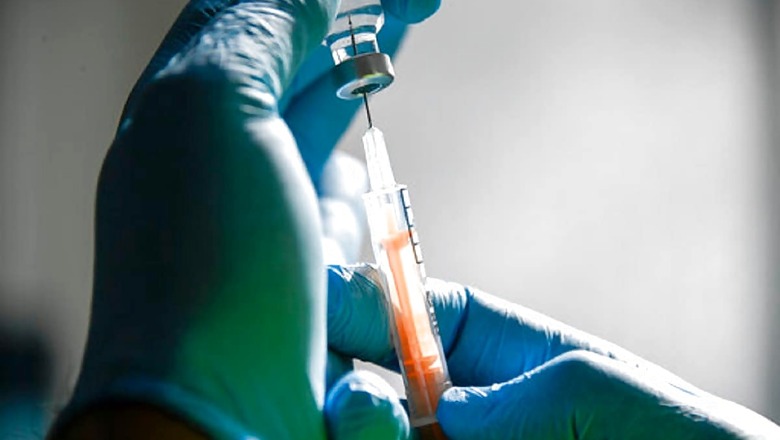
views
India is on the cusp of administering 25 crore Covid-19 jabs this week, more than the population of every other country in the world except Indonesia, the United States of America and, of course, China. By the end of July, India may have administered close to 45 crore jabs, a number which would have otherwise provided protection against the virus to every other country on the planet except China. But our scale issues are unique and often loosely appreciated.
India started the Covid-19 vaccination programme focusing on healthcare workers and frontline workers. It was then extended to the most vulnerable groups in society to people aged 45 years or more. This was quite similar to how other countries had approached their vaccination programmes. But as the deadly second wave ravaged through the country, there was an increased clamour from the states to let them control more of the vaccination process.
In some quarters of the media, there was also a belief that if states could procure vaccines themselves, they would be able to import those vaccines, which were not then available in India. The intelligentsia which had in January questioned the emergency use authorisation granted to Bharat Biotech and Serum Institute was now suggesting in April that India wasn’t vaccinating fast enough! And the consensus belief was that decentralisation to states would solve this problem.
The central government, then dealing with the sharp rise of the second wave, agreed to the political demands. Not only was the vaccination opened up for all eligible adults more than 18 years old, but states were also allowed to procure for themselves. However, from the get-go, this model was unsustainable. States soon realised that generating demand in a supply-constrained environment does not increase the production of vaccines. The vaccines aren’t fast-moving consumer goods, where supply planning can be totally influenced and quickly ramped up by higher demand forecasting through multiple consumption centres.
With people scared of stepping out of their homes for vaccination and most states failing to drive the twin decentralisation objectives of vaccine equity and access, the daily vaccination rates tapered off. After a few good days in April, India had very slow vaccine coverage in May. The numbers started improving after May 25, but a full month saw a relative lull.
Famous tennis player Jimmy Connors had once remarked– “The trouble with experience is that by the time you have it, you are too old to take advantage of it”. Thankfully for the Indian vaccination programme, the central government has reversed and reclaimed the programme structure well in time. On June 7, Prime Minister Narendra Modi in his address to the nation confirmed that the central government will provide free vaccines to all Indian adults directly.
The central government will now buy and distribute 75% of all vaccine production in India. The vaccines will be apportioned to different states based on usage patterns, wastage and the relative population. The balance 25% will continue to be sold through the private channels, where the entities involved can make a small profit. The new plan comes into effect on June 21, after a stressful decentralisation experiment of seven weeks.
The recentralisation of the vaccination process also means that vaccine manufacturers like Pfizer, Moderna and Johnson and Johnson can now deal with one authority and divert some capacities to India. The central government has already inked a deal with Biological-E for buying 30 crore doses of their currently under-trial vaccine.
Serum Institute, Bharat Biotech and Sputnik V manufacturers have all increased production capacities. Zydus Cadila may get a nod for its vaccine soon. With the United States government lifting the curbs on exports of critical raw materials, even Covavax supply may start later this year. As the vaccine supply significantly increases in the coming months, India may aim to vaccinate most of the eligible and willing adults this calendar year. So while the original plan of 30 crore fully vaccinated individuals by July may extend by a few weeks, the year-end target can be more ambitious.
Now that the central government has full control over vaccine procurement and distribution, there is an urgent need to address the issue of vaccine hesitancy. Perhaps 100 crore Indians will be eligible for vaccination. But the experience with the 45+ age group shows that not more than 50-60% of this lot may actually be willing to take a vaccine. The central government will also have to take the lead on addressing the hesitancy caused by irresponsible political statements, dubious op-eds especially questioning Covaxin and self-styled WhatsApp specialists.
The Indian vaccination effort has also been a victim of needless self-flagellation. The United States, which went to business with vaccine makers, is cited as an example of efficiency. But one of the richest countries, which had ‘made to stock’ rather than ‘made to order’ vaccines, is vaccinating at roughly the same pace as India is. The European Union experience shows that early orders don’t mean anything, because delivery schedules can go haywire. All other rich countries of some critical size – Australia, Japan, South Korea – have had their troubles.
If India has unique complexities, there are also unique capabilities this time. We developed homegrown vaccines from scratch under a year and are contract-manufacturing many others. The recentralisation plan announced by Prime Minister Modi gives us a chance to mount a spirited battle against Covid-19 in the remaining part of this year.
(Aashish Chandorkar is Director, Smahi Foundation of Policy and Research. He is an author, columnist on public policy and co-founder of the Bharatvaarta podcast. He is based in Pune. Views expressed are personal)
Read all the Latest News, Breaking News and Coronavirus News here.




















Comments
0 comment